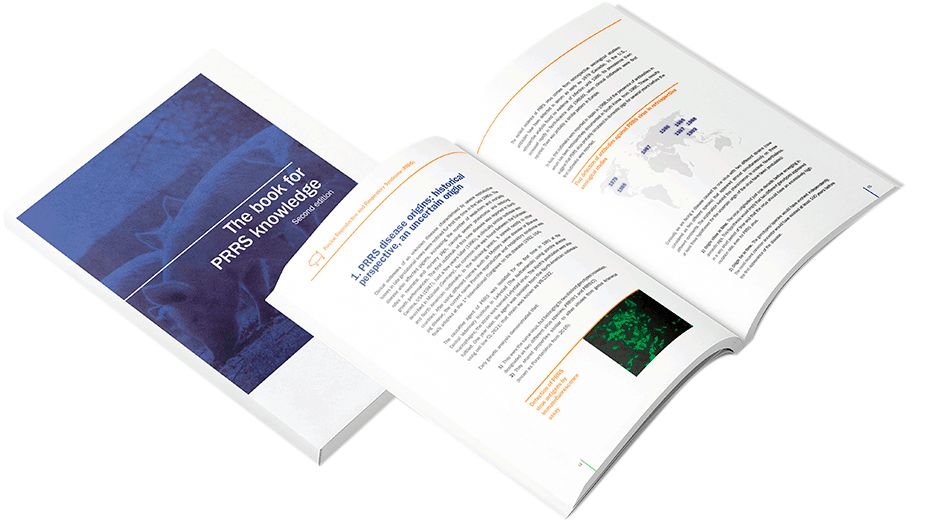1
Taxonomy
Recently, the International Committee on Taxonomy of Viruses has re-classified the two genotypes as two different species: PRRSV1 and PRRSV2.
2
Genomic organisation and virus structure
PRRS virus contains a non-segmented, single-stranded, positive-sense RNA genome. The RNA genome comprise at least ten open reading frames (ORFs); its size is approximately 15 kilobases.
3
Physical and chemical characteristics
As an RNA virus, it is considered that PRRS virus is a fairly labile virus in the environment. It is important to note that it is quickly inactivated by heat and drying. These facts should be taken account in the control of the disease and when samples are stored or sent to the lab.
4
Genetic diversity of the PRRS virus
Since the beginning, two PRRS virus genotypes were established: European or Type 1 (prototype Lelystad virus) and North American or Type 2 (prototype VR-2332). Interestingly, similarity between both prototype nucleotide sequences is as low as 55%. In fact, they have been recently considered as two different viral species: PRRSV1 and PRRSV2 (International Committee on Taxonomy of Viruses (ICTV).
5
Causes of PRRS virus genetic diversity
The PRRS virus genetic diversity is the result of mutation and selection, but also recombination: Random mutations: The PRRS virus mutation rate is assumed to be the highest so far for a virus, being up to 40 times higher than the mutation rates of well-known viruses, such as Avian influenza virus or Human immunodeficiency virus. Similarly to other RNA viruses, PRRS virus has an RNA polymerase that does not have the ability to correct the inherent common errors that occur during the transcription of RNA.
6
Consequences of PRRS virus genetic diversity
The high PRRS virus diversity has an important impact in diagnosis, immune response (vaccines, protection and immunopathogenesis), emergence of new strains, virulence, cell tropism, and epidemiology, among others.
7
Virulent strains
Since the disease emerged, PRRS virus has disseminated worldwide, gained genetic diversity and, in particular cases, increased its virulence. The basis for the virulence, however, remains unknown, despite being investigated with a variety of different approaches.



